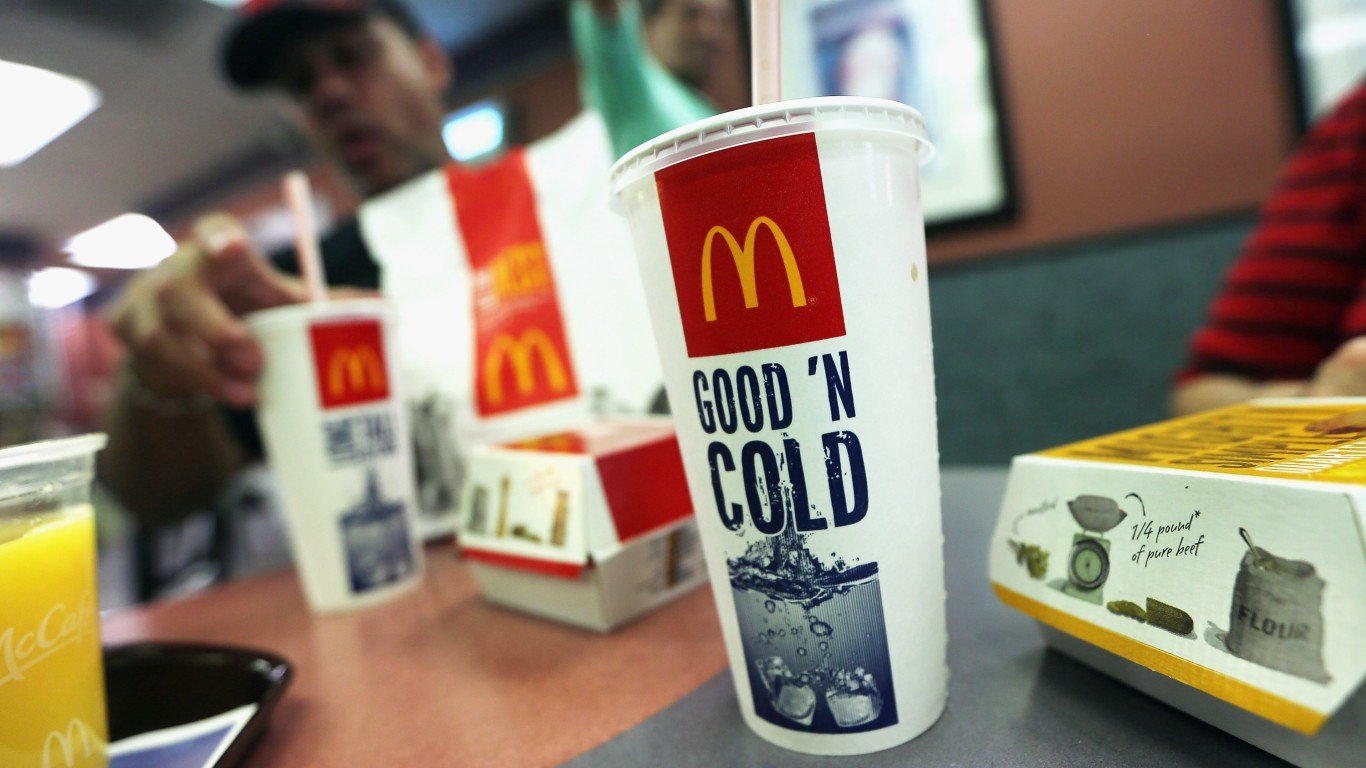

Greatness, like beauty, is often in the eye of the beholder. Even when the object of attention is a chunk of coal it can almost be made to look like a diamond with the right combination of lights and spin.
While not perfect, the analogy fits pretty well with the first-quarter results reported for the four largest publicly traded U.S.-traded fast-food operators: McDonald’s Corp. (NYSE: MCD), Restaurant Brands International Inc. (NYSE: QSR), Yum! Brands Inc. (NYSE: YUM) and Starbucks Corp. (NASDAQ: SBUX).
McDonald’s is by far the largest with a market cap of around $128 billion, about 55% higher than Starbucks’s cap of around $80 billion. Yum and QSR both hover around $26 billion in market cap.
The Golden Arches did have a very good, if not exactly great quarter. Profits easily topped estimates, although revenues came up short. On the important metric of same-store sales, McDonald’s posted a U.S. gain of 2.9% year over year and 7.8% in the international segment. The company attributed the gain to higher prices and shift in product mix.
At Starbucks, U.S. same-store sales rose 2% and U.S. average ticket rose 3% while transactions were flat. China, Asia-Pacific (CAP) same-store sales rose 3%, driven by a 4% increase in transactions in China and global same-store sales rose by 1.8%. These numbers are good, but not great.
Both McDonald’s and Starbucks achieved good same-store sales gains but the increase was at least partly due to higher prices. That’s good in one way — it means customers are willing to pay more today for something that was cheaper yesterday — but it does little to attract new customers. At fast-food stores, traffic and transactions are two of the business drivers without which growth is hard to come by.
Restaurant Brands (QSR) owns two U.S.-based franchises — Burger King and Popeye’s Louisiana Kitchen — and Canada-based Tim Horton’s. Same-store sales at Burger King rose 3.8% year over year and Popeye’s sales were up 3.2%. Tim Horton sales were down 0.3%.
Yum, which reported results this morning, posted a global same-store sales gain of just 1%. The company’s KFC division saw sales rise 2% while Pizza Hut and Taco Bell gained 1% each. Including positive foreign exchange effects, global same-store sales rose 4%, with KFC up 6%, Pizza Hut up 2% and Taco Bell up 4%. Hundreds of U.K. KFC stores were forced to close in February when a new supplier couldn’t keep up with demand for chicken. The situation is almost back to normal, but it cost the KFC division a 1% hit to same-store sales totals.
Neither Yum nor QSR referred to same-store sales growth other than in a general way and both attributed first-quarter growth to more stores and rising sales. Both are true, but also truisms.
If the rubric is growth is good no matter what the reason, then the first-quarter was a nearly great quarter for all four of these restaurant operators. If posting improved same-store sales is a better measure of performance, only McDonald’s and Starbucks — which were able both to raise same-store sales and pricing — had a more or less great quarter.
Starbucks’ results were tempered by lower-than-expected sales growth in China, however. That particularly stings since the company has declared that China is its best growth opportunity going forward. That leaves only McDonald’s at the top of the league table. Golden Arches, indeed.
Sponsored: Want to Retire Early? Here’s a Great First Step
Want retirement to come a few years earlier than you’d planned? Or are you ready to retire now, but want an extra set of eyes on your finances?
Now you can speak with up to 3 financial experts in your area for FREE. By simply clicking here you can begin to match with financial professionals who can help you build your plan to retire early. And the best part? The first conversation with them is free.
Click here to match with up to 3 financial pros who would be excited to help you make financial decisions.
Thank you for reading! Have some feedback for us?
Contact the 24/7 Wall St. editorial team.
 24/7 Wall St.
24/7 Wall St.


